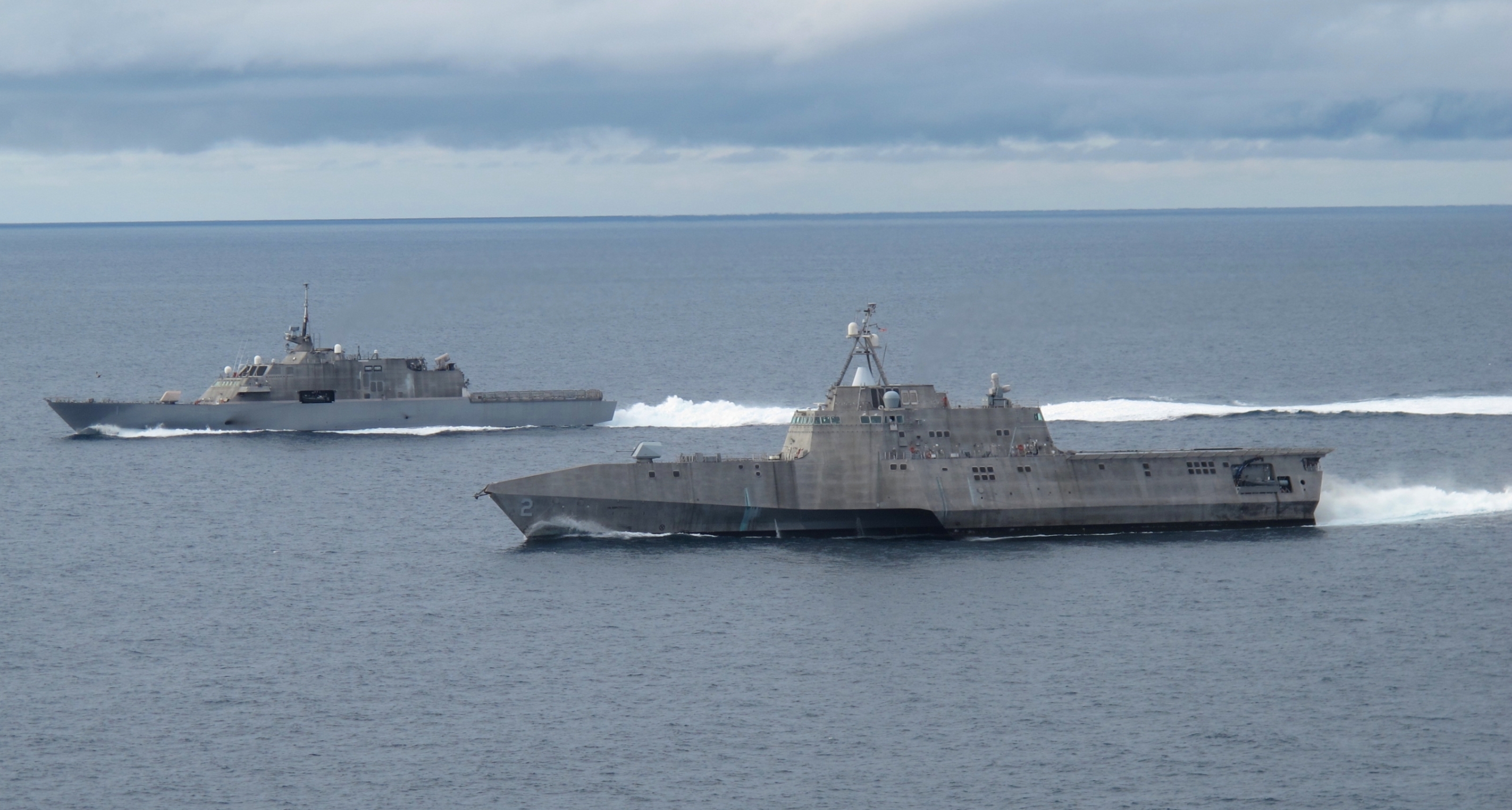
The senior leaders of the Senate Armed Services Committee (SASC) took aim at almost every aspect of the Littoral Combat Ship program in letter issued last week to the heads of the U.S. Navy.
Chairman Sen. John McCain (R-Ariz.) and ranking member Sen. Jack Reed (D-R.I.) spring boarded off a critical report of LCS — included in the Office of Development Testing and Evaluation (DOT&E) annual report — to criticize the seaframe, the ship’s eventual development into a heavily armored frigate and the progress of the mission packages the ship’s will field, according to the letter obtained by USNI News.
“We are particularly concerned with the report’s assessment of the Navy’s Littoral Combat Ship (LCS) and its associated mission packages. More than seven years after the first LCS was delivered, the report makes clear the program remains mired in testing delays with an unclear path ahead,” read the Feb. 5 letter addressed to Chief of Naval Operations John Richardson and Secretary of the Navy Ray Mabus.
“We seldom hear from Navy leaders about these challenges and the path to achieving full operational capability. Instead, Navy leaders seem to be promoting the warfighting capabilities of the LCS.”
Reed and McCain went on to pick at claims Mabus made at last month’s Surface Navy Association (SNA) symposium.
“Because [LCS] can deploy with a carrier strike group, because they have such robust anti-mine and anti-submarine capabilities we’re redesignating them as frigates… a group of small surface ships like LCS is still capable of putting the enemy fleet on the bottom of the ocean. Now that’s the success story,” according to Mabus remarks on Jan. 14.
The letter calls out Mabus’ claims of the efficacy of both variants of the LCS – Lockheed Martin’s Freedom class (LCS-1) and Austal USA’s Independence class (LCS-2).
“Based on the detailed program information presented by the Navy and DOT&E to us, this statement and similar statements do not appear to reflect the reality of the LCS program,” read Reed and McCain’s letter.
The letter cited limitations in range of the ships to keep with a carrier strike group and claimed either LCS would need more refueling time with deployed logistics ships.
Reed and McCain spend most of the letter highlighting the delays in including the three mission packages into both hulls to take on mine countermeasure (MCM) warfare, surface warfare (SuW) and anti-submarine warfare (ASW).
“The timeline for achieving a proven mine countermeasures capability remains unclear. Since 2009, the IOC for this package has been delayed by over four years. Meanwhile, legacy mine countermeasures platforms, including Avenger-class ships, Osprey-class ships, and Sea Dragon helicopters, have reached, are approaching, or have been extended beyond the end of their service lives,” read the letter.
The pair also singled out delays in development in the ASW package and the lack of missile development for the SuW package.
At its conclusion the letter said, “the recent history of the Navy’s turning ‘LCS plans’ into ‘LCS reality’ is not encouraging. We expect Navy leaders to acknowledge and close the chasm between aspirations and reality for the LCS.”
In response the Navy issued a statement to USNI News from chief Navy spokeswoman, Rear Adm. Dawn Cutler.
“For this new ship class, we will continue to refine how we train, maintain, operate and deploy LCS based on what we have learn in operational tests, maintenance, and deployments. The first two deployments of LCS have been successful, but we still have work to do in order to better execute the mission for which this platform was designed,” Cutler said.
“We look forward to working with the technical community, the fleet, and the Congress to address LCS concerns as we continue to spirally develop and strengthen this program.”
McCain is no stranger to the program and has been one of its most vocal critics in the last several years as the program was being developed.
His latest round of snipes at LCS and its mission packages comes shortly after a December memo from Secretary of Defense Ash Carter to Mabus in which Carter ordered the Navy to trim the program from 52 ships to 40.
The memo and subsequent budget changes to the Navy’s Fiscal Year 2017 budget is the second restructure of the program in as many years – following former Secretary of Defense Chuck Hagel’s requirement to create the frigate variant.
The Navy has sent two Freedom variants to Singapore for two test deployments. The Independence variants have been used mostly as test beds for future mission packages and some are expected to head to Singapore in the next few years.





